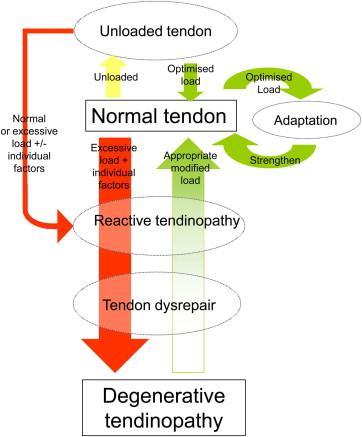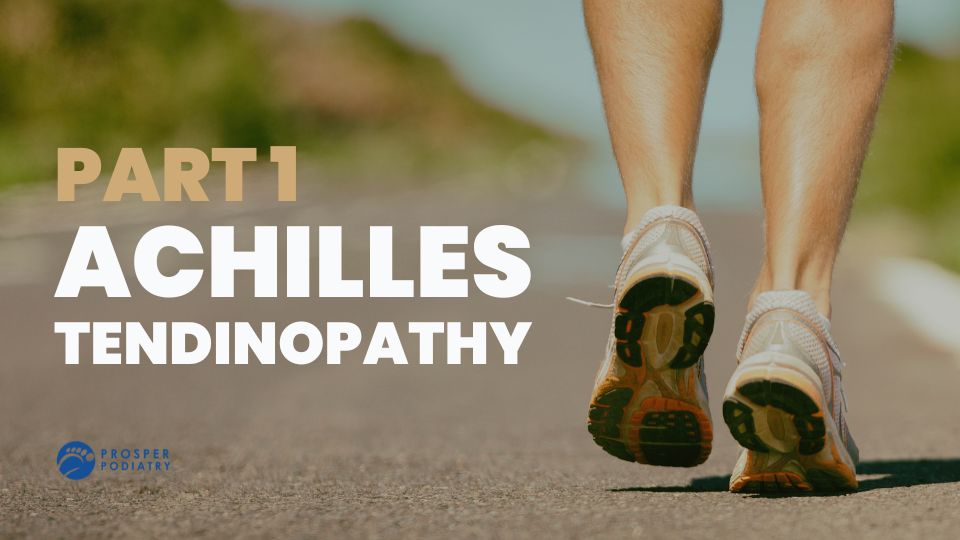What is Achilles Tendinopathy?
The incidence of Achilles tendinopathy has been gradually increasing over the last decade. Greater numbers of the population are taking up running and aerobic activities to improve their health and fitness. Achilles tendinopathy is an injury to the Achilles tendon, whereby it has been subjected to excessive amounts of load over a period of time. Put simply, if the tendon is exposed to too much load over a period of time, it will go through phases of tendinopathy where loss of function and pain will occur.
Achilles tendon anatomy
The Achilles tendon is the largest and strongest tendon in the whole body.

It is the tendon shared by the gastrocnemius and soleus muscles (calf muscles), and connects the two muscle groups to the back of the heel bone (also known as the calcaneus). The contraction of the gastrocnemius and soleus muscles results in a translational force through the Achilles tendon that results in flexion of the foot. This action is very significant in human locomotion and propulsion, responsible for actions such as walking, running and even jumping. The anatomy of the tendon also provides for both elasticity (recoil) and shock-absorbance in the foot. Given that the Achilles acts during both shock-absorbance and power output, it is subject to large amounts of load during activity. Additionally, with its anatomical location wrapping tightly along the back of the heel bone, it is subject to large amounts of compressive forces too (including compression from the Achilles on the heel bone itself or compression from footwear).
The tendon continuum
An important concept to understand, with respect to any tendon injury, is the tendon continuum.

The tendon continuum suggests that a tendon can be classified into one of 4 stages; normal tendon, reactive tendon, dysrepair tendon and degenerative tendon. Ultimately, the tendon can move up and down this continuum with the addition or removal of load and appropriate strength and conditioning. You will notice in the image that when excessive load & individual factors are exposed to the tendon it will enter into reactive tendinopathy, followed by tendon dysrepair and eventually degenerative tendinopathy. Typically, patients will present with an Achilles tendinopathy in the reactive tendinopathy or tendon dysrepair stage. In these stages, much of the previous function and strength of the tendon can be achieved with appropriate rehabilitation and exercise progression. If the tendon reaches the degenerative stage there is a poor prognosis for the tendon however, we are still able to assist in offloading, advise and referral if we believe that changes are irreversible.
Finding the sweet spot will see a normal tendon exposed to optimal loads, which will in turn result in adaptation and strengthening of the tendon in a continued loop (Cook JL, Purdam CR).
Signs and symptoms of Achilles tendinopathy
- Pain at the back of the heel.
- Difficulty walking, running or jumping.
- Pain that is worse after periods of rest.
- Pain that originates after an extended period of increased activity (be it increased intensity, increased duration or increased incidence).
- Pain that reduces after a few minutes of walking/running.
- Stiff heel/achilles after periods of activity.
- Thickening of the Achilles tendon
Possible risk factors for developing Achilles tendinopathy
- Job/career
- Weight
- Activity type/intensity/duration.
- Age
- Certain medications
- Prior history of lower limb injury/pathology
- Footwear

